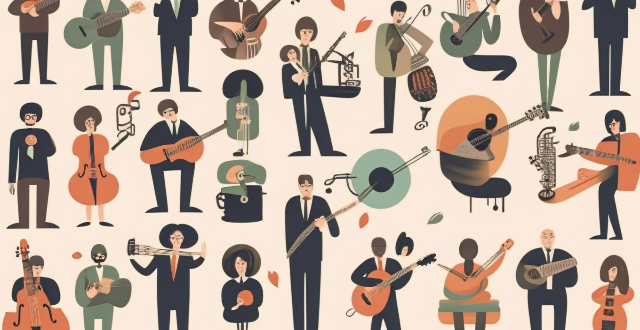South American music reflects the continent's cultural diversity through its rhythms, instruments, lyrics, and performance styles. The rhythm is characterized by complex patterns influenced by African, Indigenous, and European traditions. Traditional instruments like pan flutes and accordions hold cultural significance and provide unique sounds. Lyrics often convey narratives about history, social issues, and cultural traditions. Performance styles range from informal gatherings to large-scale events with elaborate costumes and choreography. Overall, South American music showcases the continent's vibrant culture while promoting understanding among different groups.

South American Music: A Reflection of Cultural Diversity
South America, a continent known for its rich cultural tapestry, is home to a diverse array of musical genres that reflect its multifaceted heritage. From the rhythmic beats of samba in Brazil to the soulful strains of cumbia in Colombia, South American music encompasses a wide range of styles and influences that showcase the continent's cultural diversity. In this article, we will explore how South American music reflects its cultural diversity through various aspects such as rhythm, instruments, lyrics, and performance styles.
Rhythm
The rhythm is one of the most significant elements that define South American music. The continent's music is characterized by complex rhythms that often incorporate syncopation, polyrhythms, and off-beat accents. These rhythms are influenced by African, Indigenous, and European musical traditions, creating a unique blend that reflects the continent's cultural diversity. For instance, Brazilian samba's rhythm is based on African percussion patterns, while Argentine tango incorporates European ballroom dance rhythms.
Instruments
The use of traditional instruments in South American music also reflects the continent's cultural diversity. Many genres feature instruments that have been passed down through generations and hold significant cultural value. For example, Andean music uses pan flutes made from bamboo or cane, which have been played for thousands of years. Similarly, Colombian cumbia features the accordion, an instrument brought over by German immigrants in the 19th century. These instruments not only provide unique sounds but also serve as symbols of cultural identity and heritage.
Lyrics
The lyrics of South American songs often reflect the continent's diverse history, social issues, and cultural traditions. Many songs tell stories about the struggles faced by Indigenous communities, the impact of colonialism, or the experiences of African slaves. Others celebrate local customs, festivals, and natural landscapes. By conveying these narratives through song, South American musicians help preserve their cultural heritage and promote understanding among different groups.
Performance Styles
South American music is performed in various settings, ranging from informal gatherings to large-scale concerts and festivals. These performances often involve elaborate costumes, choreography, and interactive elements that engage audiences and showcase the continent's vibrant culture. For example, Carnival celebrations in Brazil feature colorful parades with lively samba bands playing in the streets. Meanwhile, Chilean cueca performances involve intricate footwork and flirtatious interactions between dancers. These performance styles not only entertain but also serve as platforms for cultural exchange and preservation.
In conclusion, South American music reflects the continent's cultural diversity through its rhythms, instruments, lyrics, and performance styles. By embracing these diverse elements, South American musicians create a rich musical landscape that celebrates their shared heritage while highlighting their unique cultural identities.